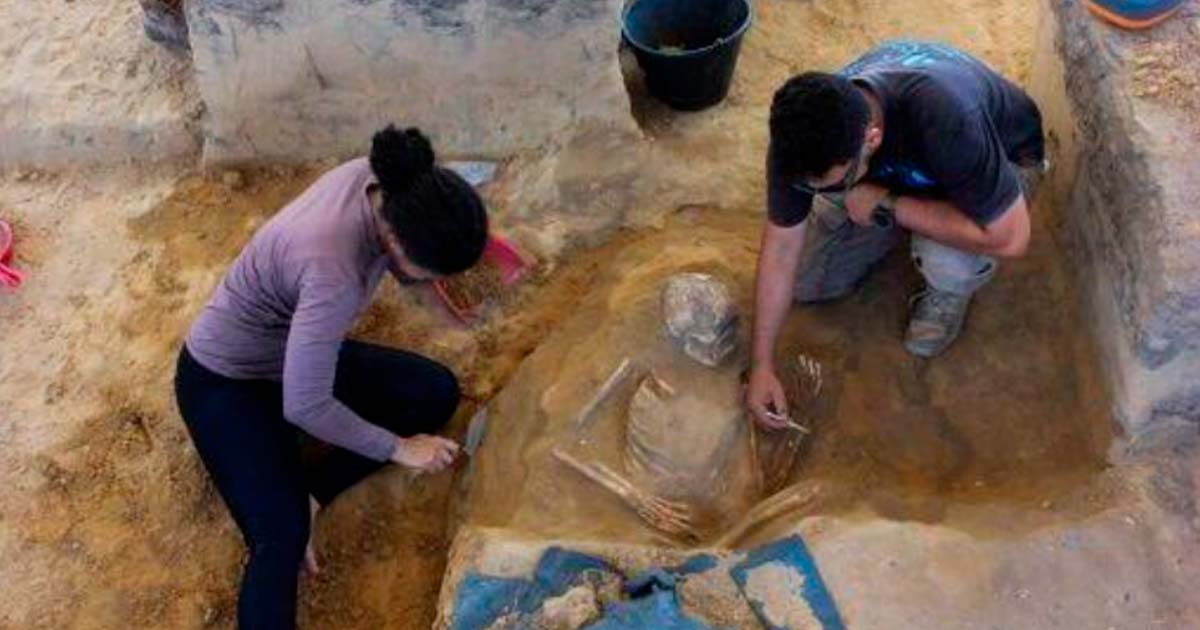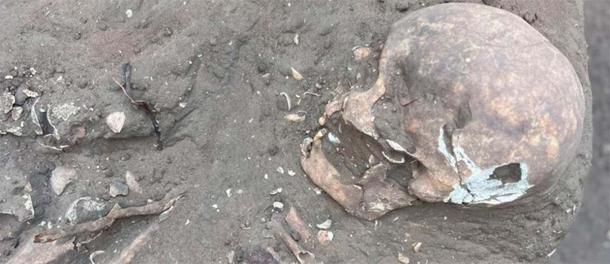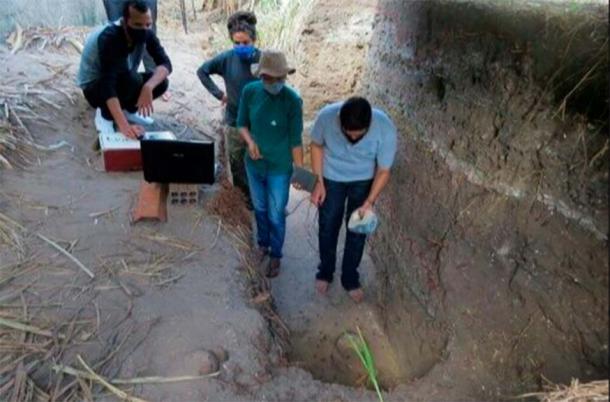9,000-year-old Human Skeletons and Over 100,000 Artifacts Unearthed in Brazil
Surveyors in Brazil were appraising a site identified for the building of a new apartment complex. However, they downed tools, and called in archaeologists when they started finding bones and shards of pottery. Now, a multi-layered archaeological site has been revealed which has yielded 43 human skeletons and in excess of 100,000 artifacts.

A team of construction workers were planning on building a new apartment complex in the coastal city of Sao Luis, the capital of Maranhao state in northeastern Brazil, when they came across human bones and shards of pottery. Now, having been dated to around to 9,000 years ago, lead archaeologist, Wellington Lage, said the find might “rewrite the history of human settlement in Brazil”.
The six-hectare (15-ac) plot is known locally as Rosane’s Farm. Back in 2019, the Brazilian construction giant MRV hired now 70-year-old Wellington Lage’s company, “W Lage Arqueologia,” to carry out a site survey before the building of a new apartment building. Researching the site, Lage discovered that bones were recovered in the 1970s, and part of a human jawbone was found in 1991.
A Grandiose Haul of Archaeology
According to a CBS news article, over the last four years Lage’s team have unearthed “43 human skeletons and more than 100,000 artifacts.” Brazil’s Institute for National Historic and Artistic Heritage (IPHAN), referred to the discoveries as a “grandiose” haul of bones and artifacts.
- Lost Civilization of the Sambaquis Builders: Unraveling the Mystery of Luzio’s People
- New Evidence Pushes Back Peopling of the Americas Almost 20,000 Years

Human skull unearthed at the construction site. (Nelyane Gomes/Iphan)
Lage said that even after four years of digging, his 27-strong team, including archaeologists, chemists, a historian and a documentary filmmaker, have “barely scratched the surface.”
Now, the team of researchers plan to catalogue each of the artifacts before they publish their findings, and the recovered items are exhibited to the public.
De-layering the Work of Nature
At the site, the upper archaeological layer comprised numerous Tupinamba artifacts, one of the various Tupi ethnic groups that inhabited present-day Brazil since before the conquest of the region by Portuguese colonial settlers in the early 17th century.
Below the top layer, the team identified artifacts of Amazonian people, and beneath this they found a “sambaqui mound,” of discarded bones, shells, and pottery. It was beneath this mound, at around two meters (6.5 ft) deep, ceramics were found dating to “8,000 to 9,000 years old.” This early date precedes the previous oldest mound in the region, which Lage told AFP reporters, “dates to 6,600 years ago.”

Experts examine ceramic fragments unearthed at a construction site in the apartment complex in Sao, Luis Brazil. (Iphan/Handout)
Rewriting Ancient Brazilian Settlement Patterns
Lage believes this 8,000 to 9,000 years old dating indicates that the region of modern-day Brazil was settled around 1,400 years earlier than previously thought, which he said “could completely change the history of not just the region but all of Brazil.” But there is a caveat you must know about, in that the artifacts have so far only been dated based on their depth, and confirmatory isotopic analysis is yet to be performed.

Isotopic analysis will be used to date the finding more precisely. (Iphan/Handout)
Archaeologist Arkley Bandeira, said the Federal University of Maranhao is building a bespoke lab and museum for the thousands of bones and artifacts, and he said the discoveries “play a crucial role in narrating our long history.” IPHAN also said in a statement that the site is a “testament to the long history of human settlement in this region of Brazil,” and “a landmark in our understanding of prehistoric Brazil.”
- The Brazil Tablet: Dropped in the Jungle by Early Transatlantic Explorers?
- Did the Portuguese Have Secret Knowledge about Brazil Before the Treaty of Tordesillas?
Brazilian Archaeological Controversies
In national importance, this discovery ranks alongside the controversial discoveries at the Boqueirão da Pedra Furada archaeological site, which some archaeologists have suggested was occupied as far back as 50,000 years ago. Based on charcoal samples, this highly-controversial dating is of course argued, and in 1994, archaeologist Tom Dillehay suggested that the charcoal remains may have been from natural fires, and were not necessarily indicative of human occupation.
However, more recently, work at the base of Boqueirão da Pedra Furada, and at an open-air site in the valley Pedra Furada, has produced evidence of human occupation spanning more than “20,000 years,” and this date was derived by a series of C-14, and Optically Simulated Luminescence) datings.
Top image: Archaeologists unearthed 43 human skeletons and in excess of 100,000 artifacts in a construction site in Sao Luis, Brazil. Source: Iphan handout
By Ashley Cowie
Related Post
A shocking documentary proves that mermaids do exist
SHOCKING Revelation: Thuya, Mother of Queen Tiye, Was the Grandmother of Akhenaten and Tutankhamun—What Ancient Egyptian Secrets Did She Leave Behind?
Breaking News: Astonishing Discoveries at Karahan Tepe Confirm an Extraterrestrial Civilization is Hiding on Earth, and NO ONE Knows!
Breaking News: Researchers FINALLY Discover U.S. Navy Flight 19 After 75 Years Lost in the Bermuda Triangle!
NASA’s Secret Investigation: Uncovering the Astonishing Mystery of the UFO Crash on the Mountain!
Explosive UFO Docs LEAKED: Startling Proof That Aliens Ruled Ancient Egypt!